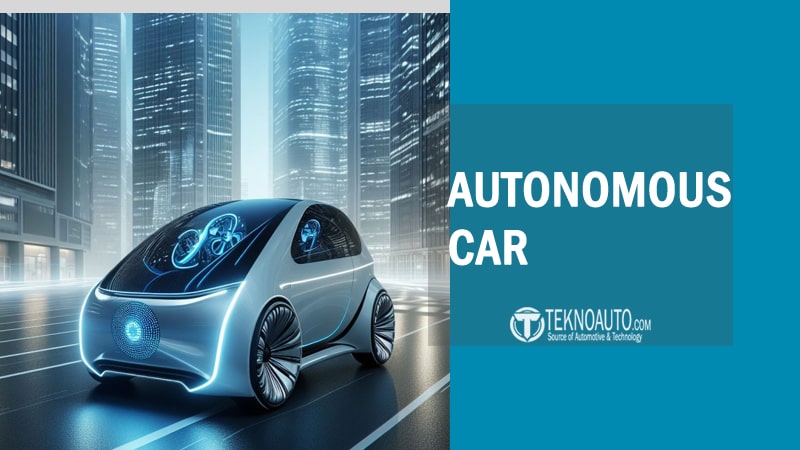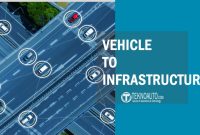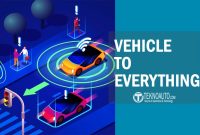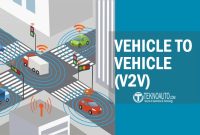The race toward self-driving vehicles is no longer science fiction—it’s happening right now. From high-end electric sedans cruising with minimal driver input to autonomous taxis navigating city streets, the autonomous car is quickly moving from prototype to practical reality. Behind the sleek design and futuristic features lies a complex web of technologies working together to make transportation safer, smarter, and more efficient.
But what exactly is an autonomous car? How do these vehicles “see” the road, make split-second decisions, and adapt to unpredictable driving conditions? And perhaps most importantly—are they ready to share the road with us?
In this guide, we’ll break down the fundamental technologies powering autonomous driving, explore the levels of automation defined by global standards, and assess where the industry stands today. Whether you’re a curious driver, a tech enthusiast, or someone evaluating the future of transportation, this article will help you understand the full picture of what autonomous vehicles are—and where they’re taking us next.
What Is an Autonomous Car?
An autonomous car—also known as a self-driving car or autonomous vehicle—is a motor vehicle capable of sensing its environment and operating with minimal or no human intervention. Instead of relying on a driver to control the steering wheel, brakes, or accelerator, autonomous cars use a combination of sensors, machine learning algorithms, and onboard computing systems to navigate roads, avoid obstacles, and make driving decisions.
At its core, an autonomous car is built to replicate—and eventually outperform—human driving ability in terms of safety, precision, and efficiency.
Autonomous Car vs. Autonomous Vehicle
While the terms are often used interchangeably, there’s a subtle difference between autonomous car and autonomous vehicle:
- Autonomous Car typically refers to self-driving passenger cars—sedans, SUVs, or EVs—designed for personal or shared use on public roads.
- Autonomous Vehicle is a broader term that includes commercial trucks, delivery robots, public transit shuttles, and other driverless transport systems beyond private cars.
In this article, we’ll focus primarily on autonomous cars, but many of the technologies and principles apply across all types of autonomous vehicles.
Key Characteristics of Autonomous Cars
- No Human Input Required (at higher levels): In advanced configurations (Level 4 or 5), the car can drive itself under most or all conditions without driver attention.
- Sensor-Based Perception: Cameras, Lidar Technology, radar, and ultrasonic sensors allow the vehicle to “see” its environment in 360 degrees.
- Decision-Making Algorithms: AI-driven software processes sensor data in real-time to make safe navigation choices.
- Connectivity: Many autonomous cars connect to cloud-based systems, traffic infrastructure, and other vehicles (V2X communication) for greater awareness and coordination.
Why It Matters
Autonomous cars are not just about convenience—they represent a transformative shift in mobility:
- Reducing accidents caused by human error
- Increasing road efficiency and reducing congestion
- Improving accessibility for elderly or disabled individuals
- Redefining car ownership and the role of the driver
With global investment surging into autonomous driving systems, understanding what these vehicles are—and what they aren’t—is key to evaluating their impact on society, safety, and the automotive industry at large.
How Autonomous Cars Work
At a glance, an autonomous car may look like any other modern vehicle—but beneath the surface lies a sophisticated network of sensors, processors, software, and artificial intelligence working together in real time. These components allow the car to interpret its surroundings, make driving decisions, and execute actions without human input.
Let’s break down how self-driving technology actually works.
Core Components of an Autonomous Driving System
1. Sensors
Autonomous cars rely on a redundant suite of sensors to perceive the world around them. Each type of sensor provides unique data that contributes to the vehicle’s 360-degree awareness.
| Sensor Type | Function | Example Use Cases |
|---|---|---|
| LiDAR | Uses lasers to map surroundings in 3D | Detecting obstacles, road edges, elevation |
| Radar | Measures distance and speed using radio waves | Tracking vehicles, especially in low visibility |
| Cameras | Capture visual information in real-time | Lane detection, traffic signs, pedestrians |
| Ultrasonic | Short-range sensors for proximity detection | Parking assistance, low-speed maneuvers |
| GPS + IMU | Precise location tracking with inertial backup | Navigation, localization on HD maps |
These sensors constantly feed data into the vehicle’s onboard computers, creating a real-time, multi-layered picture of the environment.
2. Sensor Fusion and Perception
Raw data from different sensors is fused together to form a cohesive, high-fidelity representation of the surroundings. This process allows the system to:
- Classify objects (cars, pedestrians, bikes, etc.)
- Predict movement and intent
- Detect and respond to traffic signs, lights, and lane markings
Advanced AI models trained on vast driving datasets help the car recognize patterns, react to unusual conditions, and refine its decision-making over time.
3. Decision-Making Algorithms
Once the car perceives its environment, it must make decisions about what to do next:
- Should it slow down or accelerate?
- Change lanes or maintain course?
- Yield to a pedestrian or proceed?
These decisions are governed by path planning and behavior prediction algorithms, which simulate multiple potential scenarios and choose the safest or most efficient outcome.
4. Control Systems
Once a decision is made, the car’s actuators carry it out. These systems control:
- Steering
- Braking
- Throttle
- Gear shifting
The entire loop—from sensing to action—happens in milliseconds and is constantly updated as the environment changes.
5. Connectivity and Cloud Integration
Many autonomous cars are equipped with vehicle-to-everything (V2X) communication, allowing them to:
- Talk to other vehicles
- Receive updates from traffic infrastructure (e.g., smart traffic lights)
- Upload and download driving data from the cloud
- Access updated maps and software enhancements
This connectivity improves both real-time awareness and long-term learning.
The Role of AI and Machine Learning
At the heart of every autonomous system is artificial intelligence. Machine Learning in Self-Driving Cars models are trained on millions of driving miles to:
- Recognize and classify road elements
- Handle rare or edge-case scenarios
- Continuously improve over time
Some systems also use deep reinforcement learning, where vehicles learn optimal behavior through simulation or real-world trial and error—within safe, controlled parameters.
Self-driving cars don’t just follow a set of rules—they constantly interpret, adapt, and learn from dynamic environments using a blend of software intelligence and real-time hardware feedback.
Levels of Autonomous Driving (SAE Levels 0–5)

To help standardize the conversation around self-driving technology, the Society of Automotive Engineers (SAE) established a classification system that defines six levels of driving automation, from Level 0 (no automation) to Level 5 (full automation). These levels describe how much control the system has versus how much is still the driver’s responsibility.
Understanding these Levels of Autonomous Cars is crucial—not just for evaluating a car’s capabilities, but for knowing what to expect as a driver or passenger.
Overview of SAE Automation Levels
| SAE Level | Description | Driver Role | Example Technologies |
|---|---|---|---|
| Level 0 | No Automation | Full control at all times | Basic cruise control, warning systems |
| Level 1 | Driver Assistance | Driver steers or accelerates | Adaptive cruise control, lane-keep assist |
| Level 2 | Partial Automation | Driver supervises both tasks | Tesla Autopilot, GM Super Cruise |
| Level 3 | Conditional Automation | Driver must intervene if needed | Mercedes-Benz Drive Pilot |
| Level 4 | High Automation | No driver needed in geofenced areas | Waymo autonomous taxis (limited zones) |
| Level 5 | Full Automation | No human input required | Fully autonomous in any condition (theoretical) |
Level-by-Level Breakdown
Level 0 – No Automation
- The driver performs all driving tasks.
- Some assistance systems may warn or assist (e.g., blind spot warning), but they don’t take control.
- Still the most common configuration on the road.
Level 1 – Driver Assistance
- The system assists with either steering or acceleration/braking, but not both simultaneously.
- The driver must remain engaged at all times.
- Common examples: lane keeping assist or adaptive cruise control (but not both combined).
Level 2 – Partial Automation
- The system can control steering and speed simultaneously, but the driver must remain alert and ready to take over.
- The most advanced systems widely available to consumers today.
- Examples: Tesla Autopilot, Ford BlueCruise, Hyundai Highway Driving Assist.
Level 3 – Conditional Automation
- The system can handle all driving functions under certain conditions (e.g., highway cruising).
- The driver can disengage but must be able to take over when prompted.
- Legal deployment is limited; Mercedes-Benz is the first to offer this commercially (in Germany, select US states).
Level 4 – High Automation
- No driver attention is needed within a specific geofenced area or operational domain (ODD).
- These vehicles can drive themselves even if the human does not respond.
- Example: Waymo and Cruise robotaxis in designated urban zones.
Level 5 – Full Automation
- The vehicle is fully autonomous under all conditions and environments, with no steering wheel or pedals needed.
- Still conceptual—no commercial Level 5 vehicles exist as of now.
Why These Levels Matter
- They set legal, technical, and user-expectation boundaries.
- Help regulators and manufacturers communicate capabilities clearly.
- Crucial for safety: many drivers confuse Level 2 with full autonomy, leading to misuse.
Understanding where a car fits within this framework helps you evaluate not just what it can do—but what you are still responsible for behind the wheel.
Types of Autonomous Vehicles in Development
While most discussions around autonomous technology focus on passenger cars, the reality is much broader. A variety of autonomous vehicles are currently being developed—and in some cases, already deployed—for specific tasks, industries, and transportation needs. These applications show how far-reaching the impact of self-driving technology can be.
Here are the main types of autonomous vehicles being developed today.
1. Passenger Autonomous Cars

This is the most recognizable category—self-driving sedans, SUVs, and crossovers designed for everyday use by individuals or families. These vehicles aim to replace or augment traditional car ownership and are typically equipped with features like:
- Advanced driver-assistance systems (ADAS)
- Hands-free highway driving
- AI-based perception and navigation
Companies leading in this space include Tesla, BMW, Mercedes-Benz, and Hyundai.
2. Autonomous Taxis (Robotaxis)
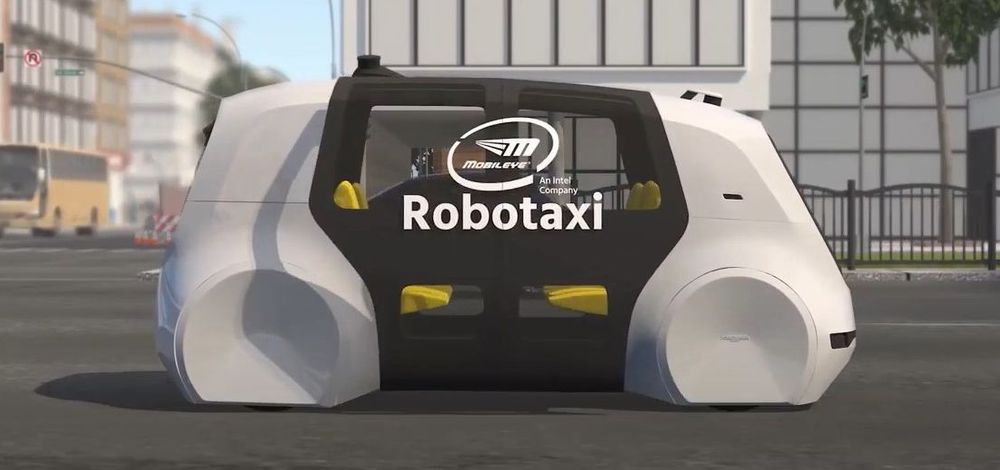
Robotaxis are fully autonomous vehicles designed to operate without human drivers in ride-hailing or urban transport services. These vehicles are:
- Electrically powered
- Operated within geofenced areas
- Managed by software platforms and fleet control systems
Waymo, Cruise, and Motional are key players offering pilot services in U.S. cities like San Francisco, Phoenix, and Las Vegas.
3. Self-Driving Trucks and Freight Vehicles

Autonomous long-haul trucks are revolutionizing logistics by automating highway driving and reducing labor demands. Features include:
- Long-distance route planning
- Remote fleet monitoring
- Platooning (multiple trucks traveling in sync)
Companies such as TuSimple, Aurora, and Embark are testing these systems across major freight corridors in North America.
4. Autonomous Shuttles and Public Transit

Designed for short-range, low-speed transport, these vehicles are often electric pods or minibuses that serve:
- Airports
- University campuses
- Urban centers
- Theme parks or business districts
They typically operate on predefined routes and use Level 4 autonomy within restricted environments. Examples: Navya, EZ10 by EasyMile, and Local Motors Olli.
5. Delivery Robots and Last-Mile Pods
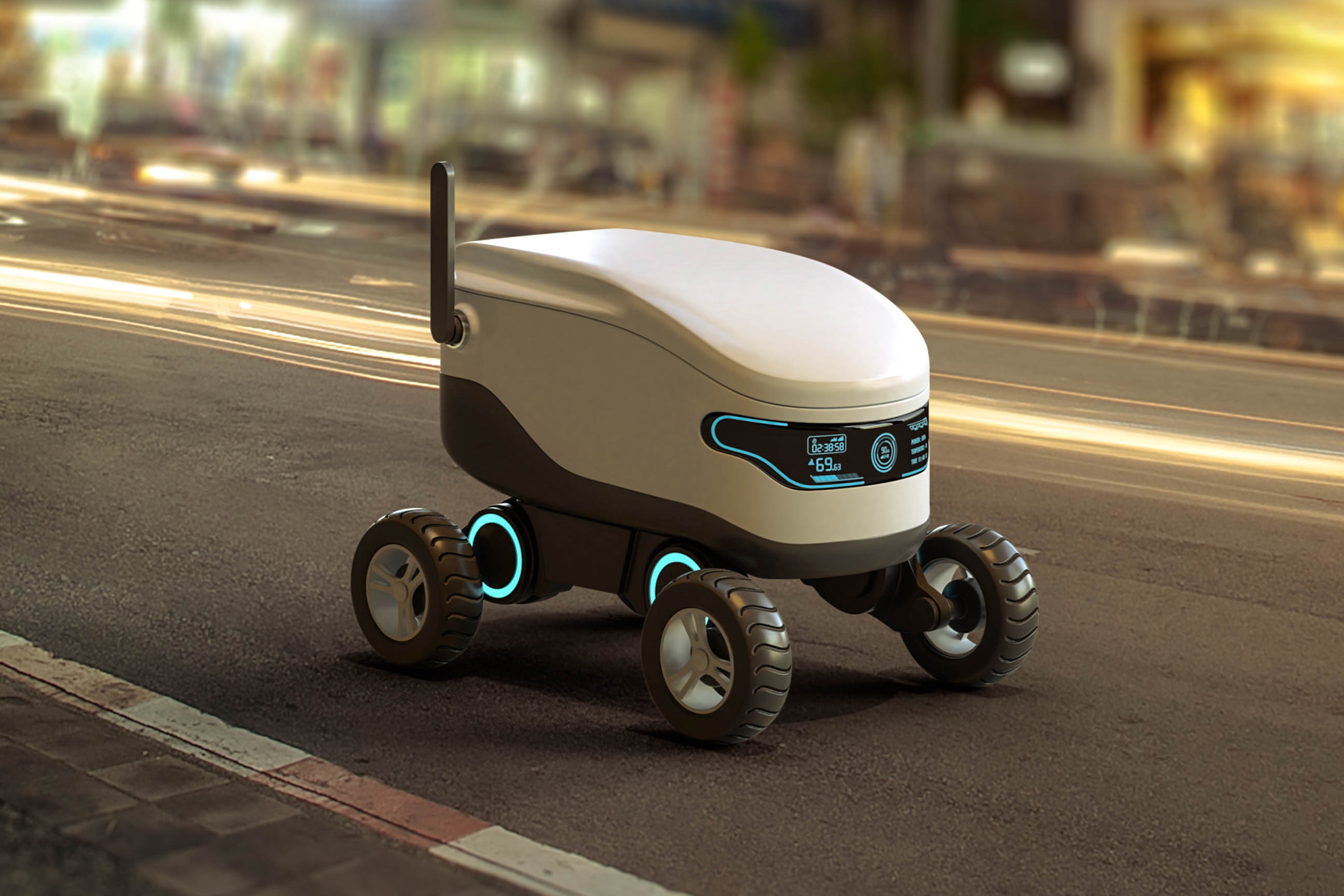
Small autonomous units are being deployed for food, package, and grocery delivery—especially in urban or campus settings. They use:
- LiDAR and computer vision for sidewalk navigation
- Remote teleoperation as backup
- Integration with e-commerce platforms
Examples include Nuro, Starship Technologies, and Amazon Scout.
6. Specialized Industrial and Agricultural Vehicles
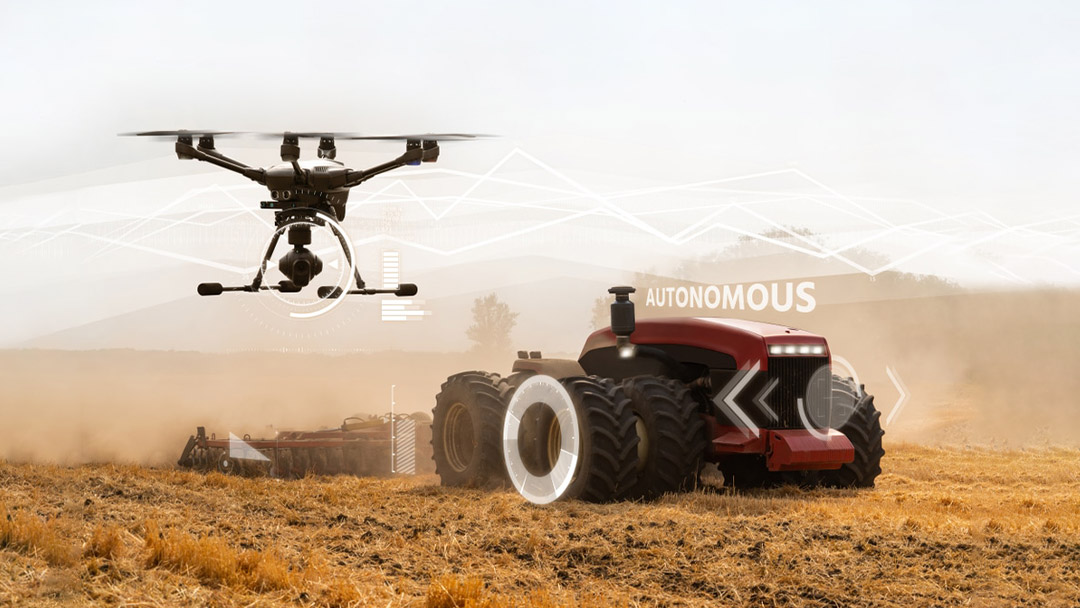
Autonomy is also making inroads in sectors like mining, agriculture, and construction, with vehicles designed for:
- Autonomous plowing or harvesting
- Driverless mining trucks
- Smart construction machinery
These vehicles often operate in off-road environments and rely on a mix of AI and precision mapping.
Each of these autonomous vehicle types serves a unique purpose, but all are built on similar foundations: perception, decision-making, control, and connectivity. As development continues, many of these categories will converge—creating a future where autonomy is embedded across all modes of transport.
Autonomous Driving Technologies by Automaker
The path toward fully autonomous vehicles isn’t being led by a single company or country—it’s a global effort involving automakers, tech giants, and startups racing to develop the smartest, safest, and most reliable systems. Each company brings its own approach to autonomy, blending hardware, software, and data to build competitive self-driving platforms.
Here’s a look at how some of the industry’s leading players are approaching autonomous driving.
Tesla – Autopilot and Full Self-Driving (FSD)
Tesla’s Autopilot is one of the most well-known driver-assist systems available today. It includes features like lane centering, adaptive cruise control, and automatic lane changes. The optional Full Self-Driving (FSD) package adds more advanced capabilities:
- Navigate on Autopilot (highway routing)
- Smart Summon
- Traffic light and stop sign recognition
- Beta software for city street navigation
However, despite the branding, FSD is still classified as Level 2, and drivers must remain attentive at all times.
Waymo – Alphabet’s Autonomous Division
Originally launched as the Google Self-Driving Car Project, Waymo is a pioneer in full autonomy. It now operates Level 4 robotaxi services in select U.S. cities using specially modified Chrysler Pacifica and Jaguar I-PACE vehicles.
Key features:
- No human driver needed in operational areas
- Custom-built Waymo Driver software and hardware stack
- Massive real-world driving dataset (over 20 million miles)
Cruise – Backed by General Motors
Cruise focuses on urban robotaxis, operating in cities like San Francisco and Phoenix. Its autonomous vehicles are all-electric and built from the ground up for driverless operation.
Highlights:
- Cruise Origin: purpose-built vehicle with no steering wheel
- Level 4 autonomy in controlled zones
- Strategic partnerships with Walmart and Honda
Mercedes-Benz – Drive Pilot
Mercedes became the first automaker to gain international approval for a Level 3 autonomous system (Drive Pilot), which allows hands-free driving under specific conditions, such as:
- Speeds up to 60 km/h (in traffic)
- Approved highways in Germany and parts of the U.S.
The system handles driving, but the driver must be ready to take over when requested.
Hyundai & Kia – Highway Driving Assist
Hyundai’s Highway Driving Assist (HDA) and HDA 2 systems offer Level 2 features including:
- Lane centering
- Adaptive cruise control with machine learning
- Highway auto lane change (HDA 2)
These systems are available across models like the IONIQ 5 and Genesis GV60.
BMW & Audi – Premium-Level Driver Assistance
Both BMW and Audi offer Level 2+ systems with high-end features:
- Traffic Jam Assist
- Highway Assist
- Automatic lane changing
Audi previously showcased a Level 3 system (Traffic Jam Pilot) on the A8, but it remains limited due to regulatory hurdles.
Other Notable Players
- Apple: Working secretly on its own autonomous EV project (“Project Titan”)
- NVIDIA: Supplies AI chips and software for perception and decision-making
- Aurora Innovation: Focused on trucking and logistics autonomy
- Aptiv + Hyundai (Motional): Developing robotaxi platforms with Lyft
Each company takes a slightly different path, but all share a common goal: to create safer, more efficient mobility by pushing the boundaries of autonomous technology.
Benefits of Autonomous Cars
The development of autonomous cars is not just a technological achievement—it represents a paradigm shift in how we think about mobility, safety, and transportation systems. While the road to full autonomy remains complex, the potential benefits are already clear and far-reaching.
Here’s how autonomous cars can transform the driving experience and the world around us.
1. Improved Road Safety
Human error is the leading cause of road accidents worldwide, accounting for over 90% of traffic collisions. Autonomous vehicles, when properly designed and tested, have the potential to:
- Reduce crashes caused by distraction, fatigue, or impaired driving
- Maintain consistent reaction times
- Follow traffic laws and safe driving protocols without fail
While no system is flawless, even incremental improvements in safety could save thousands of lives annually.
2. Reduced Traffic Congestion
Autonomous vehicles can:
- Communicate with each other to prevent sudden stops or bottlenecks
- Optimize routes dynamically using real-time data
- Enable smoother merging, lane changes, and intersections
This coordinated behavior could drastically improve traffic flow—especially in urban areas.
3. Increased Accessibility
Autonomous cars can provide greater independence to:
- Seniors and people with limited mobility
- Visually impaired or medically restricted individuals
- Those unable to drive due to age or legal limitations
By removing the need for a human driver, autonomous vehicles open doors to new levels of transportation equity.
4. Enhanced Fuel and Energy Efficiency
Self-driving systems are designed to:
- Avoid aggressive acceleration and braking
- Maintain consistent speeds
- Select optimal routes to reduce travel time
Combined with electric drivetrains, autonomous cars can significantly lower emissions and fuel consumption.
5. Economic Productivity Gains
With autonomy, time spent behind the wheel can be repurposed. Commuters might:
- Work remotely from the vehicle
- Relax or engage in entertainment
- Sleep on long-distance travel
This shift from “driver” to “passenger” has implications not just for individuals, but for industries ranging from logistics to entertainment and real estate.
6. New Business Models and Urban Planning
Autonomous vehicles pave the way for:
- Mobility-as-a-Service (MaaS): On-demand, driverless transport
- Smarter city layouts: Less space needed for parking, more green space
- Dynamic vehicle fleets: Shared autonomous shuttles, robotaxis, and delivery bots
Urban infrastructure will likely evolve to accommodate this new form of transport.
Autonomous cars are not just about automation—they are about redefining the relationship between people and mobility, offering safer, more accessible, and more efficient transportation for the next generation.
Risks and Challenges
Despite their promise, autonomous cars face a long list of technical, ethical, regulatory, and societal challenges. Bringing fully autonomous vehicles to the mass market isn’t just about building better software—it’s about solving real-world problems that are messy, unpredictable, and sometimes controversial.
Here’s a breakdown of the major risks and roadblocks ahead.
1. System Failures and Edge Cases
While autonomous systems excel in controlled environments, the real world is filled with “edge cases”:
- Sudden pedestrian behavior
- Construction zones or temporary signage
- Unmapped rural roads
- Complex weather conditions
Even one failure in these situations can be catastrophic. Ensuring near-perfect reliability remains one of the biggest technical hurdles.
2. Cybersecurity Threats
As vehicles become more connected, they also become vulnerable to cyberattacks:
- Hackers could potentially take control of braking or steering systems
- Privacy risks with constant data collection and location tracking
- Threats to fleet-wide operations through centralized control systems
Robust security protocols, encryption, and intrusion detection systems are critical.
3. Ethical Decision-Making (The Trolley Problem)
Autonomous cars may face situations where moral judgment is required:
- Should the vehicle prioritize the safety of the passenger or pedestrians?
- What if all options involve some form of harm?
These dilemmas raise complex ethical questions that no algorithm can answer objectively—and regulators have yet to reach consensus.
4. Legal and Liability Uncertainty
If a self-driving car causes an accident, who is responsible?
- The driver?
- The automaker?
- The software provider?
Without clear legal frameworks, widespread adoption remains risky for both consumers and manufacturers. Many jurisdictions are still working through these liability issues.
5. Lack of Public Trust and Acceptance
Despite advances, many people remain skeptical or fearful of autonomous cars:
- Concerns about giving up control
- Confusion about the car’s actual capabilities (e.g., misuse of Level 2 systems)
- Cultural and generational resistance to automation
Building public confidence through education, transparency, and gradual rollout is essential.
6. Infrastructure and Regulation Gaps
Most cities are still built for human drivers, not AI systems. Autonomous cars need:
- High-definition maps and 5G connectivity
- Smart traffic signals and signage
- Laws that support testing and deployment
Without supportive infrastructure, autonomy can’t scale effectively.
7. Economic Disruption
The shift to autonomous vehicles will affect:
- Jobs: Millions of driving-related roles could be eliminated
- Insurance: Traditional risk models may become obsolete
- Car ownership: Consumers may opt for shared mobility services instead
Policymakers and industries will need to anticipate and manage these transitions.
Autonomous driving is not just a technical transformation—it’s a societal shift that challenges how we think about safety, responsibility, and human agency on the road.
Legal, Ethical, and Regulatory Landscape
The road to autonomy isn’t just paved with code and sensors—it’s shaped by laws, ethics, and policies that govern how these vehicles operate in the real world. As autonomous car technology advances, regulators, lawmakers, and ethicists are racing to define boundaries and responsibilities that have never existed before.
Here’s how the legal and ethical environment is evolving globally.
1. Evolving Regulations Around the World
United States
- The U.S. takes a state-by-state approach, leading to a fragmented legal landscape.
- States like California, Arizona, Texas, and Nevada allow extensive autonomous testing and operation under specific conditions.
- The National Highway Traffic Safety Administration (NHTSA) is working on federal guidelines but has not yet implemented binding legislation on full autonomy.
European Union
- The EU emphasizes safety standards, privacy, and data security.
- Germany became the first country to authorize Level 4 self-driving cars on public roads in 2021.
- UNECE (United Nations Economic Commission for Europe) has set frameworks that influence global autonomous vehicle (AV) design and use.
Asia
- China is aggressively pushing AV development, with strong support for testing and smart city integration.
- Japan and South Korea have focused on autonomous shuttles and mobility services for aging populations.
2. Ethical Dilemmas in Autonomous Driving
Autonomous vehicles must make decisions that carry ethical weight, including:
- Who to protect in an unavoidable crash scenario?
- Should the vehicle break traffic laws to avoid harm?
- How to balance personal risk vs. public safety?
The classic “trolley problem” becomes very real in AV design. However, building ethics into algorithms is controversial, and no global standard currently exists for how these decisions should be made.
3. Liability and Insurance Challenges
One of the thorniest legal questions: Who’s at fault in an autonomous car accident?
- Is it the manufacturer? The software provider? The vehicle owner?
- If the car was operating in autonomous mode, is the driver still legally responsible?
New insurance models and product liability frameworks are emerging to address these gaps, but until laws catch up, automakers remain cautious about full deployment.
4. Standards and Testing Requirements
- Organizations like SAE, ISO, and UNECE are establishing certification protocols for AV safety.
- Some governments mandate safety driver presence or minimum disengagement reporting.
- Simulation testing and on-road testing benchmarks are becoming legal prerequisites for launch.
5. Public Policy and Urban Planning
AVs are influencing urban policy in areas such as:
- Zoning laws (e.g., drop-off zones, fewer parking lots)
- Integration with public transit and micro-mobility
- Data governance and surveillance regulations
Cities must rethink infrastructure and land use to accommodate a growing autonomous fleet.
The legal and ethical environment surrounding autonomous cars is still in flux, with massive variation across countries and jurisdictions. Striking the right balance between innovation and responsibility will be key to unlocking the technology’s full potential.
The Future of Autonomous Driving
As autonomous vehicles move from controlled pilots into the broader transportation ecosystem, the question is no longer “if” they’ll become mainstream—but how, when, and in what form. The years ahead will be shaped by breakthroughs in technology, evolving regulations, and shifting public expectations.
Here’s what the future of autonomous driving might look like—and what it could mean for individuals, industries, and cities.
1. Gradual Expansion of Level 4 Autonomy
The most realistic scenario for the next decade is a steady increase in Level 4 deployments in geofenced or purpose-built environments:
- Urban robotaxi fleets expanding to more cities
- Autonomous shuttles integrated into public transport networks
- Highway-only autonomous trucks for freight corridors
These use cases will act as proof-of-concept for regulators and the public, paving the way for wider acceptance.
2. Shift Toward Mobility-as-a-Service (MaaS)
Autonomous vehicles are expected to accelerate the transition from car ownership to mobility-as-a-service:
- On-demand access to self-driving cars via apps
- Subscription-based autonomous commuting
- Integration with multimodal transport (scooters, rail, bus)
This shift will reduce the number of privately owned vehicles, changing how cities are designed and how people move.
3. AI and Data-Driven Improvements
Future AV systems will rely more heavily on:
- Deep reinforcement learning for adaptive driving behavior
- Real-time edge computing for faster processing and responsiveness
- Massive fleet-based data training for edge-case recognition
The more these systems drive, the smarter and safer they become—especially with shared data ecosystems across manufacturers and cities.
4. Infrastructure Designed for Autonomy
Cities and highways will evolve to accommodate AVs through:
- Dedicated AV lanes
- Smart intersections with connected traffic signals
- Digital road mapping updated in real time
- Charging infrastructure optimized for electric autonomous fleets
This infrastructure will reduce uncertainty for AV systems and improve traffic coordination overall.
5. Legal Frameworks Will Catch Up
By the end of the decade, expect to see:
- Standardized global regulations for AV testing and deployment
- Clear liability laws defining fault in autonomous accidents
- New licensing models for remote operators or fleet monitors
Regulation is likely to lag behind tech, but it will become more unified as real-world data and stakeholder pressure increase.
6. Broader Economic and Social Impacts
Autonomy will reshape:
- Employment: New jobs in remote vehicle management, AV maintenance, and fleet logistics—but displacement in driving roles
- Urban space: Less need for parking lots, more room for green space and development
- Environmental policy: Lower emissions through smart routing, electrification, and reduced congestion
AVs will also influence insurance, retail, real estate, and urban planning in ways we’re only beginning to understand.
7. Toward Level 5 Autonomy—Eventually
True Level 5 autonomy—fully self-driving under all conditions without human controls—remains a long-term goal. Key challenges include:
- Handling unpredictable environments
- Ethical decision-making at scale
- Coordinating with human drivers and non-AVs
While some predictions placed Level 5 within reach by the early 2020s, experts now suggest it may take another decade or more, and even then, it may be limited to specific high-value use cases (e.g., industrial, rural logistics, or private campuses).
In the long run, autonomous driving promises to transform mobility as we know it. It’s not just about removing the driver—it’s about reimagining how we move, work, and live.
Conclusion
Autonomous cars are no longer a concept of the distant future—they’re being tested, refined, and slowly integrated into everyday life. From Level 2 systems available in today’s premium vehicles to Level 4 robotaxis operating in select cities, autonomous technology is steadily reshaping what it means to drive.
While significant challenges remain—technical, legal, ethical, and infrastructural—the potential benefits are transformative. Safer roads, greater accessibility, cleaner cities, and more efficient transportation systems are just a few of the promises driving this global shift.
For consumers, understanding the differences between autonomy levels, knowing what technologies are available today, and keeping an eye on regulatory developments will be key to making informed choices. For cities and industries, the challenge will be adapting policies, infrastructure, and services to accommodate this emerging wave of mobility.
The journey toward fully autonomous driving is complex and uncertain, but one thing is clear: we’re entering a new era of mobility—where cars do more than drive; they think, learn, and evolve.
FAQ About Autonomous Car
What is the difference between autonomous cars and autonomous vehicles?
An autonomous car specifically refers to a self-driving passenger vehicle, while autonomous vehicle is a broader term that includes other forms of transportation like trucks, delivery robots, shuttles, and even drones. All autonomous cars are autonomous vehicles, but not all autonomous vehicles are cars.
Are autonomous cars legal to drive on public roads?
It depends on the location and the level of autonomy. In many countries, Level 2 and Level 3 systems are legal with certain restrictions. Some U.S. states and cities allow Level 4 robotaxis under specific conditions, but Level 5 autonomy is not yet legal or commercially available anywhere.
Can autonomous cars drive in bad weather?
Current autonomous systems still struggle with heavy rain, snow, or fog, which can impair sensors like LiDAR and cameras. While companies are working on solutions, poor weather remains one of the biggest technical challenges for fully autonomous operation.
Are self-driving cars safer than human drivers?
Autonomous cars have the potential to be much safer than human drivers by eliminating factors like distraction, fatigue, or impaired driving. However, the technology is still evolving, and real-world safety data is being closely monitored before broad conclusions can be made.
When will fully autonomous (Level 5) cars be available to consumers?
Most experts agree that Level 5 autonomy is still many years away—likely after 2030. While the technology is progressing, widespread adoption depends on further advancements in AI, regulation, public trust, and infrastructure readiness.

